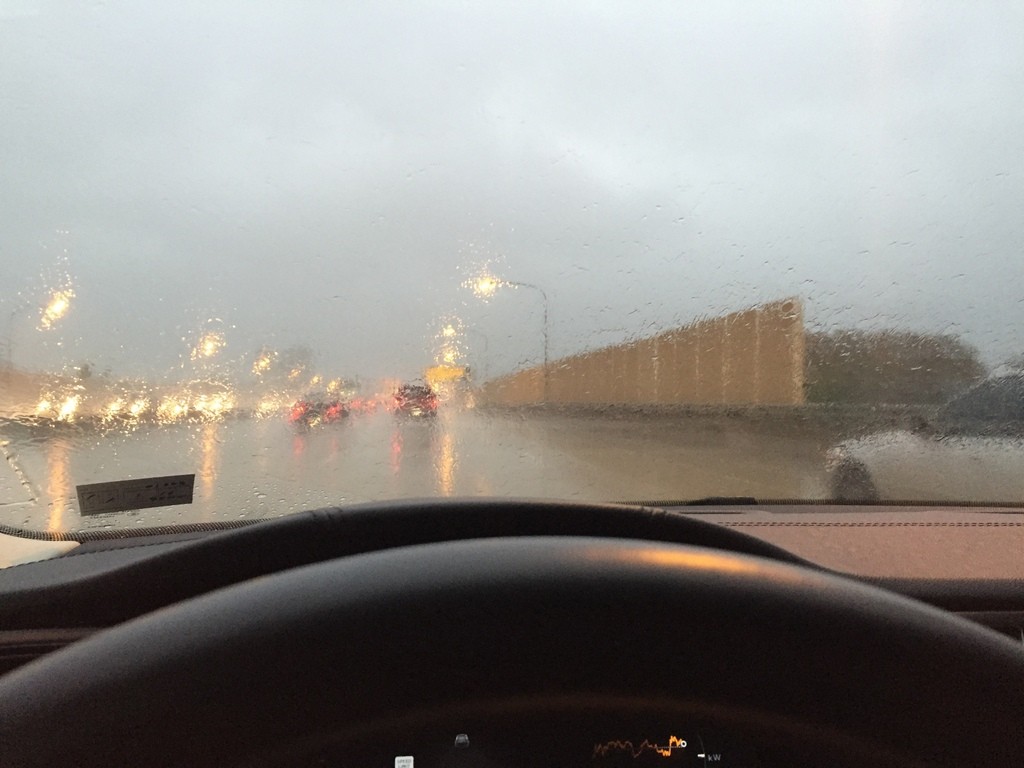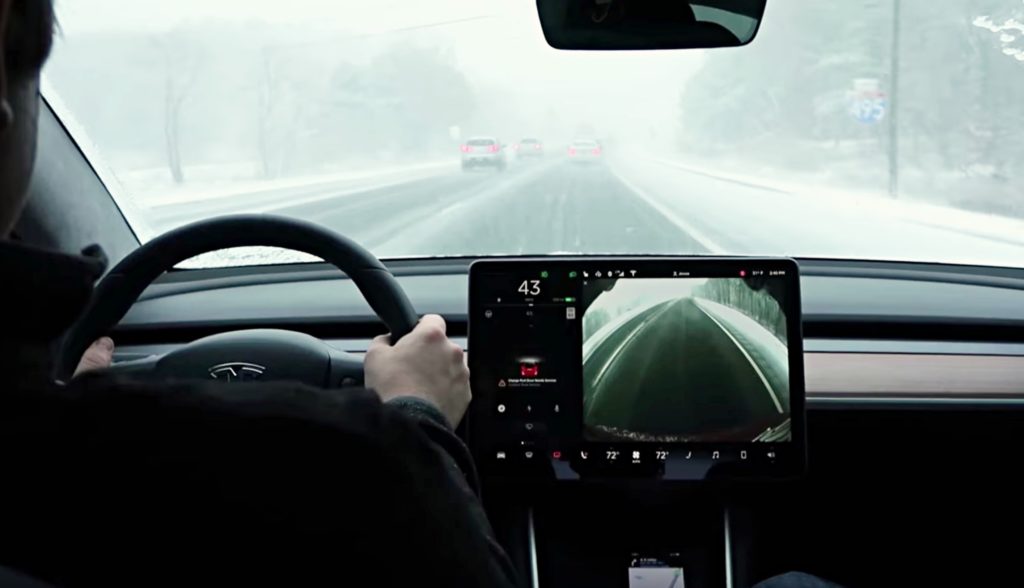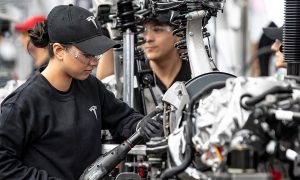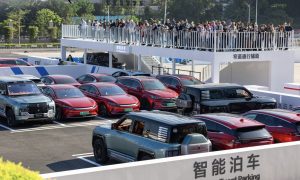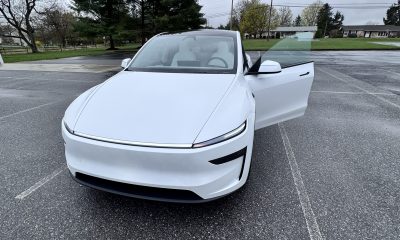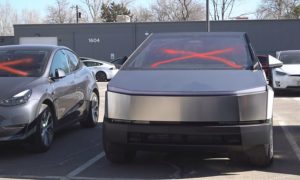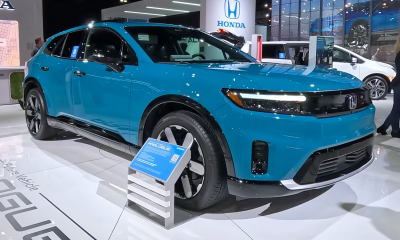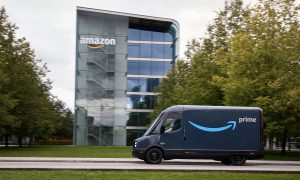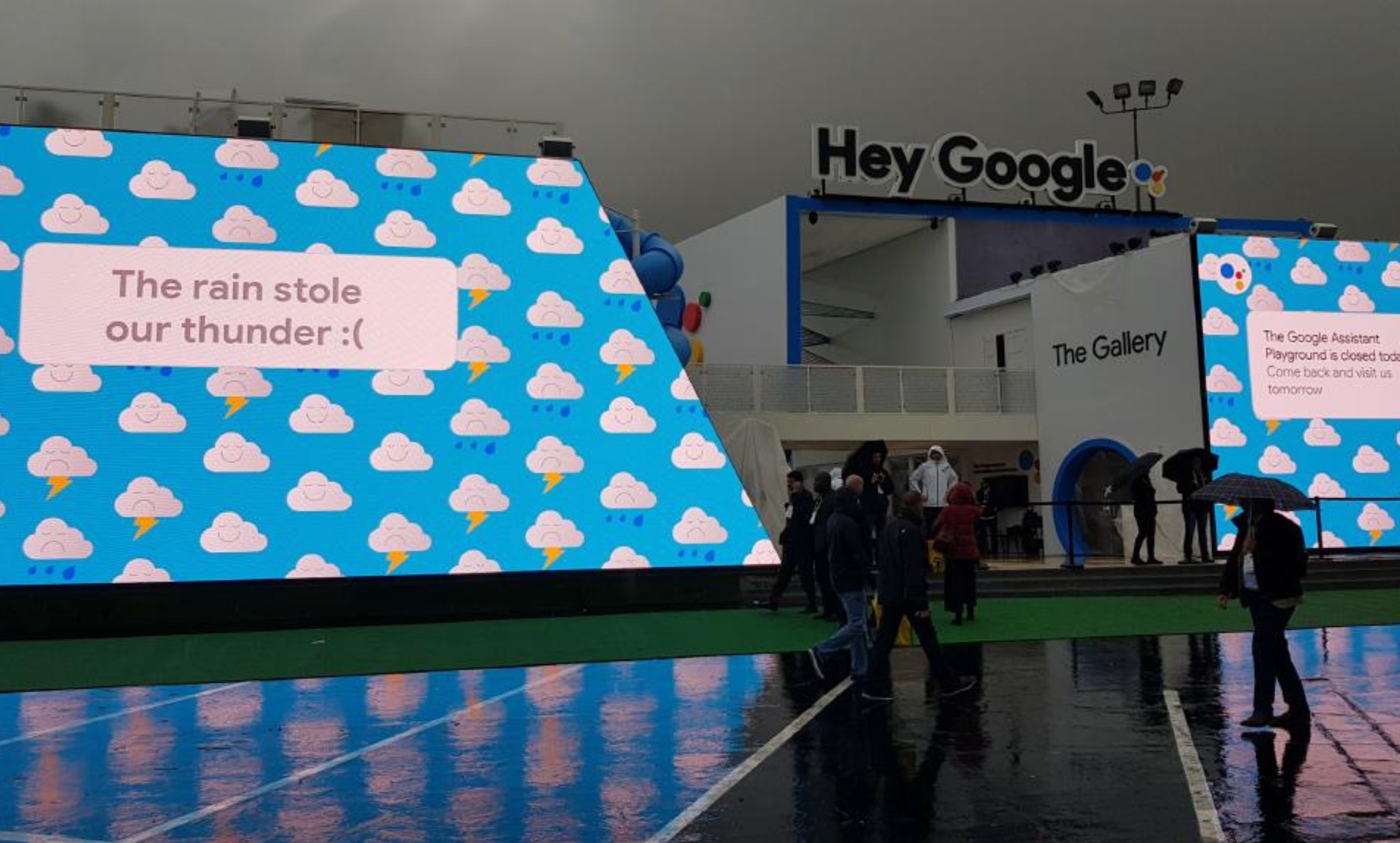

Lifestyle
Heavy rains at CES 2018 highlights self-driving technology limitations
At the Consumer Electronics Show annual showcase of technology in Las Vegas this year, something important was inadvertently highlighted. Inclement weather at CES 2018 caused several manufacturers and suppliers to cancel or significantly alter their autonomous vehicle showcases. Nissan, for example, discontinued showings of its new ProPilot technology in the 2019 Nissan LEAF electric car (demos of the LEAF otherwise continued). Other manufacturers embraced the chance to show some of their latest capabilities.
Decisions to cancel seemed based more on liability, both physical (“What if something goes wrong?”) and intangible (“If it doesn’t work, we lose face.”), than on likely limitations of the manufacturer’s technologies. Those pressing forward or even using the weather as a way to showcase capabilities were mostly smaller, less branded companies whose reputations to the public would suffer only short-term losses were things to go awry.
It literally hasn't rained in 118 days in Las Vegas. Until today. Guess we can't use this road 👀 pic.twitter.com/5sjVKDEx00
— Marques Brownlee (@MKBHD) January 10, 2018
Semi-Autonomous Systems in General
To understand why bad weather can be such a detriment to current-use and near-future autonomous vehicles we must first understand how these systems work. Most semi-autonomous systems on the road are based on a combination of three technologies, all coupled to semi-intelligent computers. These techs are radar, LiDAR, and cameras. Radar uses radio waves, LiDAR uses lasers to find ranges, and cameras use varied spectrums of light to create images for a computer to decode.
Tesla’s Autopilot uses radar and cameras to get a view of the world around the vehicle. Subaru’s EyeSight system uses cameras only, seeing ahead of the car in three dimensions, but thus far not seeing in 360-degrees. Ford’s current systems use combinations of radar, light-detection and ranging (LiDar), and cameras to see the world around the vehicle. Nissan uses radar and LiDar in the same way. General Motors, BMW, and others all use variations on these themes for their own production-level semi-autonomous systems.
The majority of these manufacturers are also either utilizing or working on utilizing GPS and mapping to augment what the vehicle’s computer systems know about the world around it. Tesla’s Autopilot uses GPS, at least in North America, to sense where the vehicle is. Including (whenever possible) which lane of the road it occupies and when the road will change (to see curves and terrain). Using GPS and mapping is much easier in North America than it is in Europe and China, where its use is more restricted.
When Weather Turns Bad
Yet with all of these technologies, there are still limitations.LiDAR does not work when the sensors are in any way blocked, such as with rain droplets or ice. Radar is often distorted by ice as well. Cameras cannot function if a clear enough image cannot be received for analysis by the computers. Thus it’s possible for all three sensing technologies to become useless when the weather is sub-optimal.
For those living in South Florida and San Diego, these are probably not anything to worry about. For the rest of the planet, though, they are a concern for a good portion of the year. Where I live in Wyoming, for example, inclement weather affects driving for about half of the year. In some parts of the world, such as Iceland, Norway, Russia, and much of Canada, the weather is sub-optimal for half the year or more. The same can be said when turning southward to the other hemisphere, especially in South America.
When visibility is low, humans compensate by making best guesses about what’s around them. We can use other cues to find our vehicle’s lane in traffic during heavy snow, for example, by relying on curbs, the tracks of cars that have gone ahead, and known landmarks. Just as we use non-visual cues such as input from the pedals and the steering wheel to know how slippery the roadway is so we can adjust speed and reactions accordingly. We do most of this subconsciously.
Computers, however, are not always that capable. They’re getting there, though. Ford has been busy creating high-resolution maps of the roadways around the world, with details such as the exact position of curbs and lane lines, where trees and signs are located, and what traffic rules are in place (speed limits and the like). The idea being that the better the knowledge the vehicle’s computers have of a given area, the more capable that vehicle will be of navigating that area without a driver’s input.
Ford says that it’s latest-generation autonomous vehicle technologies can now drive with full, unplowed snow cover blocking all lane markings and most road signs. That is confined to Ford’s Mcity, a fake town the company built to test autonomous driving. After all, Ford is a huge company and has a lot to lose should there be a fault with its systems when used out in public.
Tesla, for their part, has largely used Telsa owners as their primary test bed. So far, that’s worked for them, but it carries a very large liability should something go wrong. Most automakers are not willing to take that kind of risk and are instead developing carefully and in-house.
How Semi-Autonomous Is Doing Now
As an automotive journalist, I drive a lot of vehicles. I had more than 80 of them as test vehicles for a week or more in 2017 and more than that in 2016. This year, I will likely see at least that many or more. Plus “butt in seat,” track, and off-road events and shows where more short-term driving takes place. My experience includes vehicles with no autonomous or “driver-assist” technologies at all (e.g. Alfa Romeo 4C) and vehicles with full-on level 3 and even 4 technologies (e.g. BMW plug-ins, 2017 Tesla S). The field of currently-offered technologies for semi-autonomous driving is wide, indeed, but none of these systems are truly autonomous and most are fairly limited in use. They’re improving, but it’s gonna be a while.
With an autonomous vehicle, as Carlos Ghosn (former Nissan CEO, now CEO of Renault and Mitsubishi) said a couple of years ago during a meet the press event in Detroit, “a two-ton vehicle is a little different than a smartphone.” There’s a little more at stake with a car, in terms of safety concerns, than there is with a phone.
My personal experience has been that camera-based systems are the best when conditions are good. Subaru’s EyeSight may be the most reliable and useful of the forward-looking driver-assistance systems on the market right now. But when heavy rains or worse come, it’s all but useless. Enter Nissan’s current technologies, as found on the Murano and in much of the Infiniti line. This system adds radar and can “look under” traffic to see several vehicles ahead. Much better, but still unable to find a lane in bad weather when markings are unclear. Ford, as far as in-production technology, fares about the same, but with a somewhat less over-reactive adaptive cruise control. BMW has similar limits but has some of the best self-parking I’ve witnessed so far. Tesla has one of the best systems, especially in the current-generation with its defrosting cameras and the like. The best all-around mixture of capability, though, is what’s found in the latest Volvo vehicles. Likely due to the kind of redundancy that Volvo is so well known for when it comes to safety equipment.
With this, Tesla should be noted for their proactive nature when it comes to pushing new technologies like Autopilot and its myriad upgrades since inception. How Autopilot reacted to heavy snow in Iceland two years ago compared to how it fares almost two years later is indicative of that. The same car cannot necessarily navigate that same road under those same conditions, but it will likely hold on longer than it did and would likely be able to pull over to safety should the driver not take action on his own.
In short, we have some time before autonomous vehicles are both a reality and capable of handling the many varied conditions that humans have adapted our driving to. But with the current pace of development, vehicles capable of moving through nearly any kind of weather will be available within the next decade.
Elon Musk
X account with 184 followers inadvertently saves US space program amid Musk-Trump row
Needless to say, the X user has far more than 184 followers today after his level-headed feat.
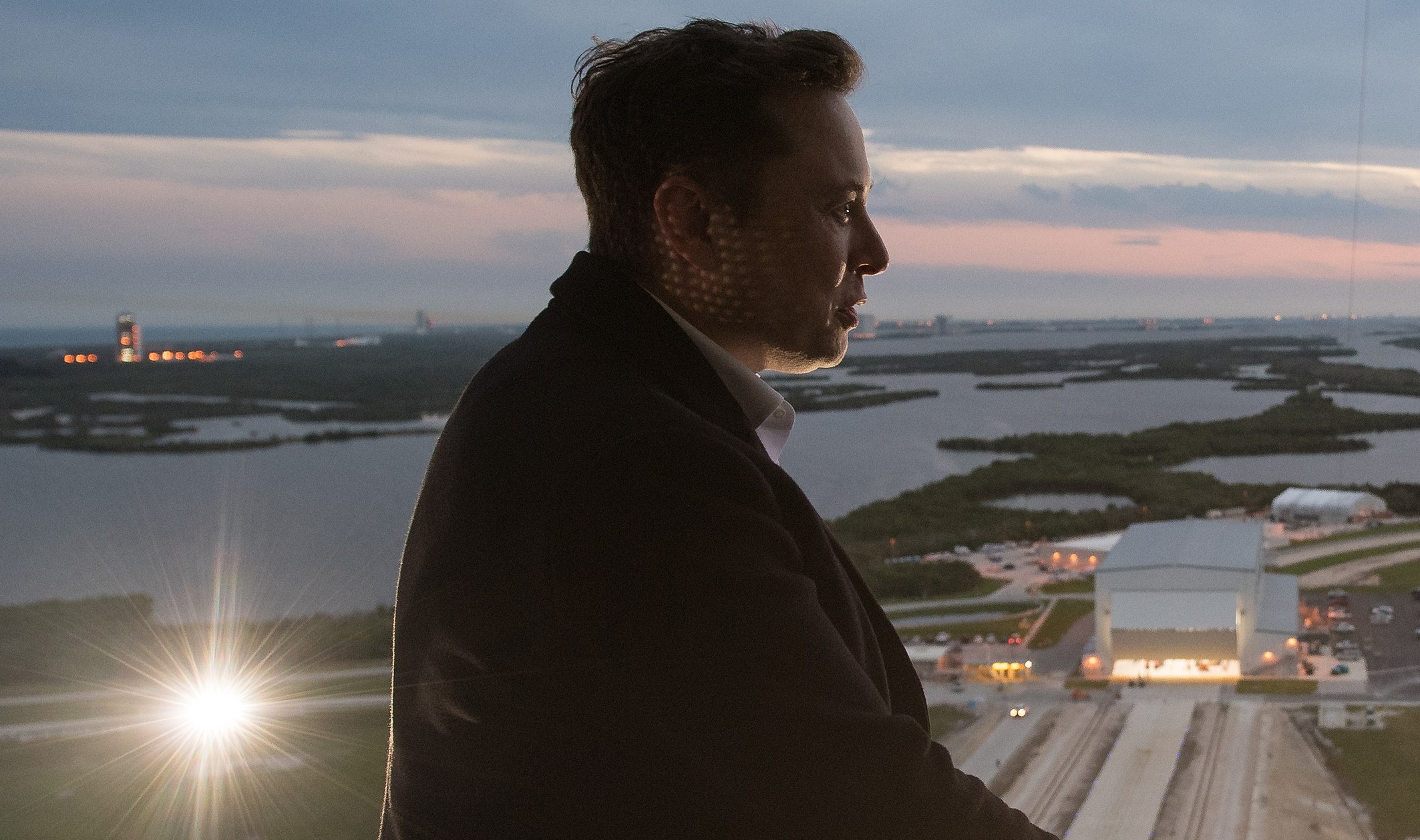
An X user with 184 followers has become the unlikely hero of the United States’ space program by effectively de-escalating a row between SpaceX CEO Elon Musk and President Donald Trump on social media.
Needless to say, the X user has far more than 184 followers today after his level-headed feat.
A Near Fall
During Elon Musk and Donald Trump’s fallout last week, the U.S. President stated in a post on Truth Social that a good way for the United States government to save money would be to terminate subsidies and contracts from the CEO’s companies. Musk responded to Trump’s post by stating that SpaceX will start decommissioning its Dragon spacecraft immediately.
Musk’s comment was received with shock among the space community, partly because the U.S. space program is currently reliant on SpaceX to send supplies and astronauts to the International Space Station (ISS). Without Dragon, the United States will likely have to utilize Russia’s Soyuz for the same services—at a significantly higher price.
X User to the Rescue
It was evident among X users that Musk’s comments about Dragon being decommissioned were posted while emotions were high. It was then no surprise that an X account with 184 followers, @Fab25june, commented on Musk’s post, urging the CEO to rethink his decision. “This is a shame this back and forth. You are both better than this. Cool off and take a step back for a couple days,” the X user wrote in a reply.
Much to the social media platform’s surprise, Musk responded to the user. Even more surprising, the CEO stated that SpaceX would not be decommissioning Dragon after all. “Good advice. Ok, we won’t decommission Dragon,” Musk wrote in a post on X.
Not Planned, But Welcomed
The X user’s comment and Musk’s response were received extremely well by social media users, many of whom noted that @Fab25june’s X comment effectively saved the U.S. space program. In a follow-up comment, the X user, who has over 9,100 followers as of writing, stated that he did not really plan on being a mediator between Musk and Trump.
“Elon Musk replied to me. Somehow, I became the accidental peace broker between two billionaires. I didn’t plan this. I was just being me. Two great minds can do wonders. Sometimes, all it takes is a breather. Grateful for every like, DM, and new follow. Life’s weird. The internet’s weirder. Let’s ride. (Manifesting peace… and maybe a Model Y.)” the X user wrote.
Lifestyle
Tesla Cybertruck takes a bump from epic failing Dodge Charger
The Cybertruck seemed unharmed by the charging Charger.
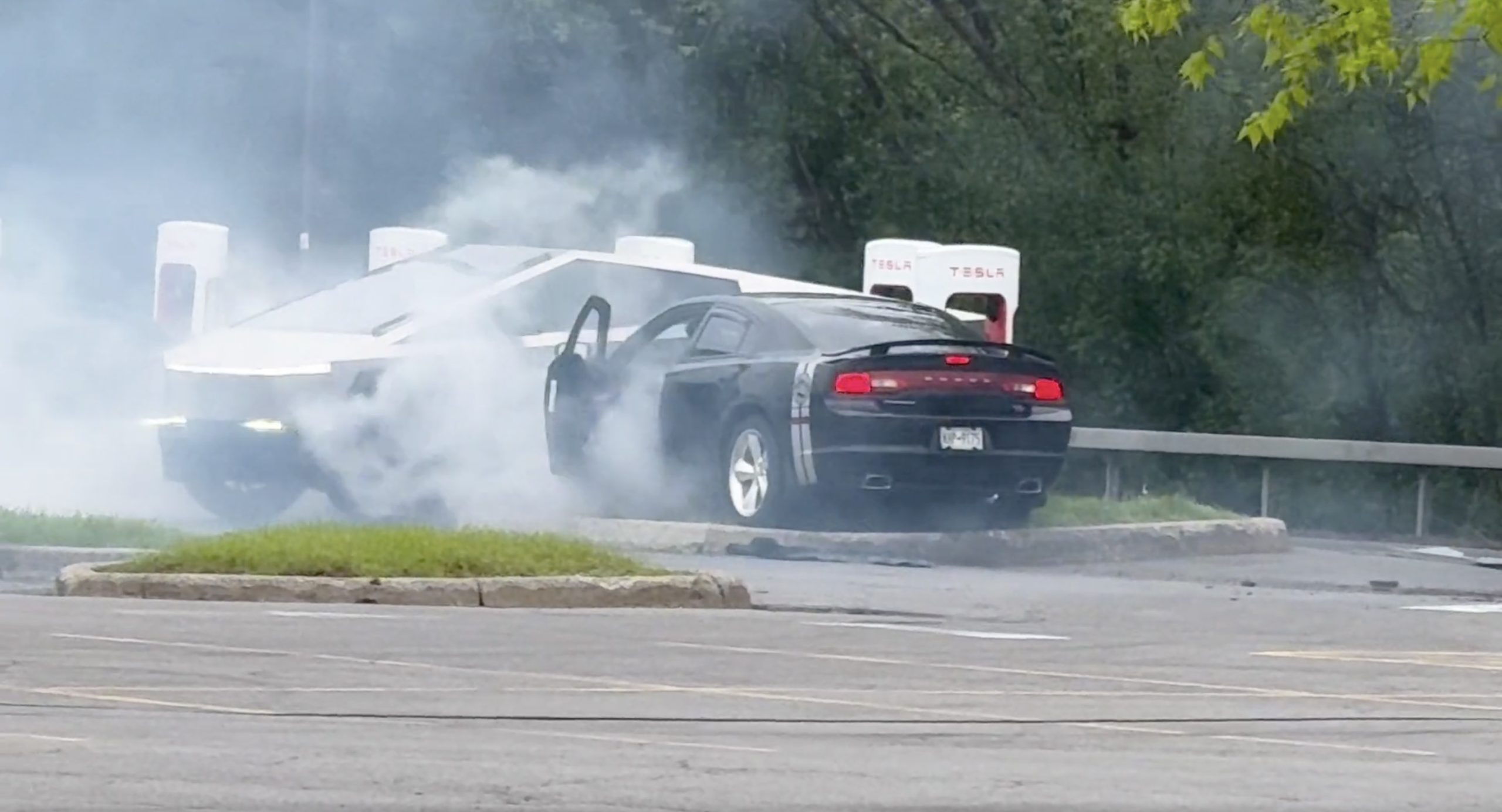
There comes a time in a driver’s life when one is faced with one’s limitations. For the driver of a Dodge Charger, this time came when he lost control and crashed into a Tesla Cybertruck–an absolute epic fail.
A video of the rather unfortunate incident was shared on the r/TeslaLounge subreddit.
Charging Charger Fails
As could be seen in the video, which was posted on the subreddit by Model Y owner u/Hammer_of_something, a group of teens in a Dodge Charger decided to do some burnouts at a Tesla Supercharger. Unfortunately, the driver of the Charger failed in his burnout or donut attempt, resulting in the mopar sedan going over a curb and bumping a charging Cybertruck.
Ironically, the Dodge Charger seemed to have been parked at a Supercharger stall before its driver decided to perform the failed stunt. This suggests that the vehicle was likely ICE-ing a charging stall before it had its epic fail moment. Amusingly enough, the subreddit member noted that the Cybertruck did not seem like it took any damage at all despite its bump. The Charger, however, seemed like it ran into some trouble after crashing into the truck.
Alleged Aftermath
As per the the r/TeslaLounge subreddit member, the Cybertruck owner came rushing out to his vehicle after the Dodge Charger crashed into it. The Model Y owner then sent over the full video of the incident, which clearly showed the Charger attempting a burnout, failing, and bumping into the Cybertruck. The Cybertruck owner likely appreciated the video, in part because it showed the driver of the Dodge Charger absolutely freaking out after the incident.
The Cybertruck is not an impregnable vehicle, but it can take bumps pretty well thanks to its thick stainless steel body. Based on this video, it appears that the Cybertruck can even take bumps from a charging Charger, all while chilling and charging at a Supercharger. As for the teens in the Dodge, they likely had to provide a long explanation to authorities after the incident, since the cops were called to the location.
Lifestyle
Anti-Elon Musk group crushes Tesla Model 3 with Sherman tank–with unexpected results
Ironically enough, the group’s video ended up highlighting something very positive for Tesla.
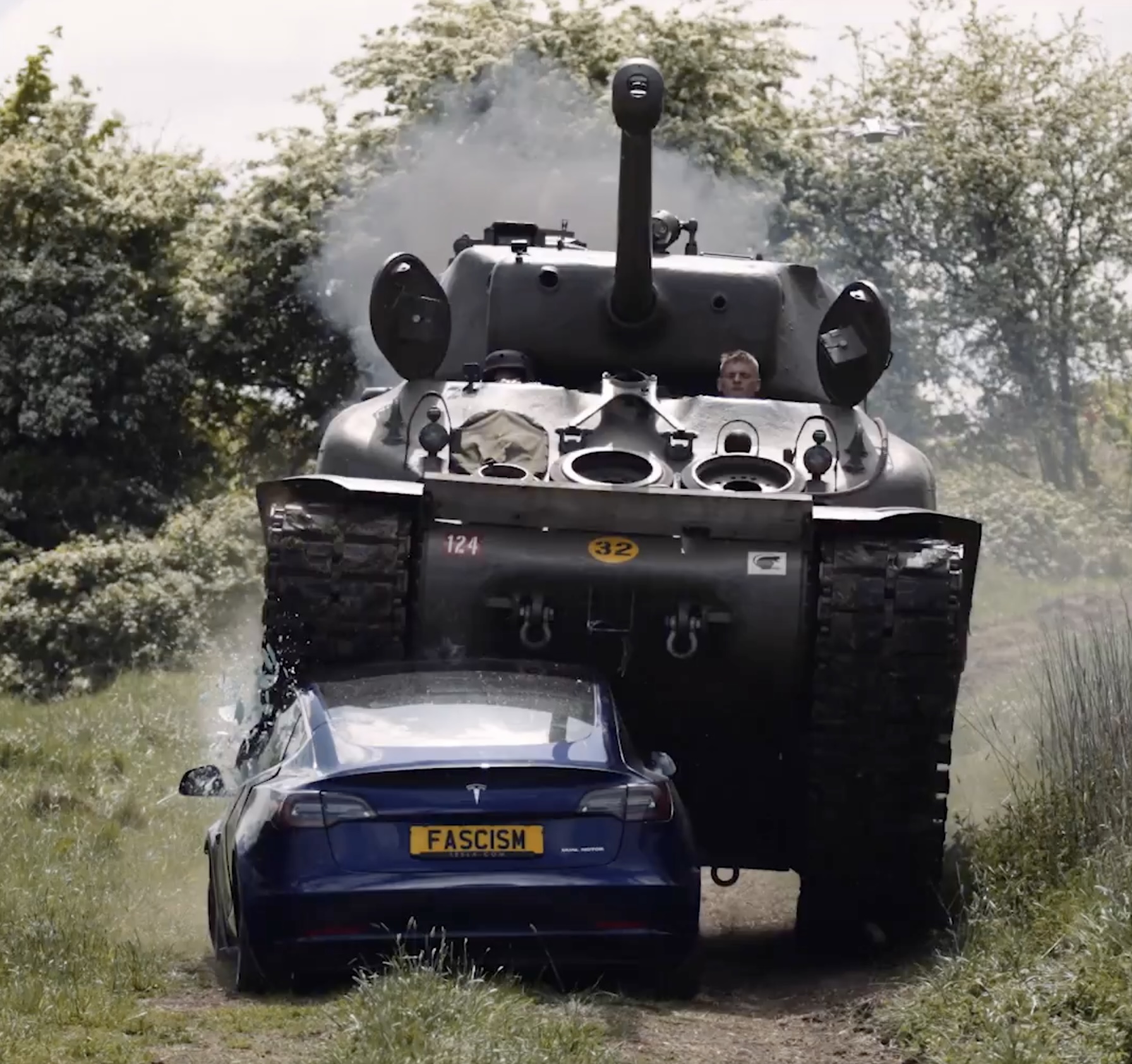
Anti-Elon Musk protesters and critics tend to show their disdain for the CEO in various ways, but a recent video from political action group Led By Donkeys definitely takes the cake when it comes to creativity.
Ironially enough, the group’s video also ended up highlighting something very positive for Tesla.
Tank vs. Tesla
In its video, Led By Donkeys featured Ken Turner, a 98-year-old veteran who served in the British army during World War II. The veteran stated that Elon Musk, the richest man in the world, is “using his immense power to support the far-right in Europe, and his money comes from Tesla cars.”
He also noted that he had a message for the Tesla CEO: “We’ve crushed fascism before and we’ll crush it again.” To emphasize his point, the veteran proceeded to drive a Sherman tank over a blue Tesla Model 3 sedan, which, of course, had a plate that read “Fascism.”
The heavy tank crushed the Model 3’s glass roof and windows, much to the delight of Led By Donkeys’ commenters on its official YouTube channel. But at the end of it all, the aftermath of the anti-Elon Musk demonstration ended up showcasing something positive for the electric vehicle maker.
Tesla Model 3 Tanks the Tank?
As could be seen from the wreckage of the Tesla Model 3 after its Sherman encounter, only the glass roof and windows of the all-electric sedan were crushed. Looking at the wreckage of the Model 3, it seemed like its doors could still be opened, and everything on its lower section looked intact.
Considering that a standard M4 Sherman weighs about 66,800 to 84,000 pounds, the Model 3 actually weathered the tank’s assault really well. Granted, the vehicle’s suspension height before the political action group’s demonstration suggests that the Model 3’s high voltage battery had been removed beforehand. But even if it hadn’t been taken off, it seemed like the vehicle’s battery would have survived the heavy ordeal without much incident.
This was highlighted in comments from users on social media platform X, many of whom noted that a person in the Model 3 could very well have survived the ordeal with the Sherman. And that, ultimately, just speaks to the safety of Tesla’s vehicles. There is a reason why Teslas consistently rank among the safest cars on the road, after all.
-

 Elon Musk2 days ago
Elon Musk2 days agoTesla investors will be shocked by Jim Cramer’s latest assessment
-

 News1 week ago
News1 week agoTesla Robotaxi’s biggest challenge seems to be this one thing
-

 Elon Musk2 weeks ago
Elon Musk2 weeks agoElon Musk slams Bloomberg’s shocking xAI cash burn claims
-

 News2 weeks ago
News2 weeks agoTexas lawmakers urge Tesla to delay Austin robotaxi launch to September
-

 Elon Musk1 week ago
Elon Musk1 week agoFirst Look at Tesla’s Robotaxi App: features, design, and more
-

 Elon Musk2 weeks ago
Elon Musk2 weeks agoTesla Robotaxis are becoming a common sight on Austin’s public roads
-

 Elon Musk2 weeks ago
Elon Musk2 weeks agoSpaceX President meets India Minister after Starlink approval
-

 Elon Musk2 weeks ago
Elon Musk2 weeks agoxAI’s Grok 3 partners with Oracle Cloud for corporate AI innovation

